The Extraordinary Ya Ya Learners
- Monna Laoshi
- Jan 17, 2024
- 3 min read
Updated: Mar 5, 2024
A Portrait of Ya Ya Learners
This past fall was packed with exciting school events for our children such as Sports Day, Parent Career Show and Share, yoga specials, farmer’s market visit, and of course, a big celebration before the holiday break. I had the pleasure of being in every event to capture the moments. Despite the excitement at these events, I'm amazed by the way our children stay calm and respectful, and focus on the task at hand. As I observe how these children learn and grow, a vivid portrait of who our Ya Ya Learners would become after graduating from our program naturally forms in my mind.
First of all, Ya Ya Learners would develop strong social-emotional skills. They would have no problem in sharing and taking turns effortlessly. Whether it's time to clean up or transition to the next activity, Ya Ya Learners would be among the first to help and diligently follow their teacher's directions. From the time they joined our program at the age of 2, Ya Ya Learners have had numerous opportunities to practice different strategies for expressing and managing their feelings. Therefore, they would show maturity in regulating their emotions as they move on to a kindergarten program. Ya Ya Learners have tremendous empathy, and they are experts in forming positive and respectful relationships with their peers and grownups. What makes us proud is the shared value of elegance and virtue among Ya Ya Learners and their families, qualities that will help them go a long way in the future.
Second, Ya Ya Learners would demonstrate impressive cognitive abilities including persistence, problem solving, making connections, symbolic thinking and more. With mostly open-ended materials in our school and teachers trained to ask specific questions that prompt learning, Ya Ya Learners would become very confident in exploring the world around them. They would be willing to take learning risks, think outside of the box, and find solutions when something doesn’t work out. As an educator, I cannot stress enough that children's ability to learn, apply, and extend knowledge is far more important than memorizing numbers or letters (often mistakenly labeled as academic skills). That's why we always involve the children in the learning process, and we never take a top-down approach to learning.
Last but not least, a distinct advantage Ya Ya Learners would acquire is their bilingualism. Upon graduating from our 100% Mandarin immersion program, their young minds would be wired differently compared to their monolingual peers. Research has shown that being bilingual enhances executive functioning skills, including time management, a prolonged attention span, and an extended working memory. Equally important, Ya Ya learners would develop a deep love for the Chinese language and culture, creating a solid foundation for their continued Mandarin studies in the future. The most valuable asset they would retain is a global mindset, allowing them to be open-minded about different cultures and perspectives.
What you've read so far are some of the major indicators of kindergarten readiness. With our well-rounded curriculum, open-ended discussions and activities, alongside loving teachers who always strive for flawless execution, we can say with confidence that Ya Ya Learners would be outstanding candidates for any kindergarten program out there.
Meet our Ya Ya Learners through the slideshow below. CLICK the right arrow to enjoy the photos of the activities they have been engaged in.
Activity Highlight
Self portraits are one of the most iconic activities in a preschool setting. And this activity can be repeated multiple times during the school year in different forms. The self portraits children create through time are evident indicators of their development in areas such as fine motor skills, language development, and cognitive skills. This classic activity took a new twist when our teachers came up with the idea of asking children to draw each other through a transparent surface.
Self Portraits (自畫像)

Skills Children Learned:
Language: describe their friend’s facial features in Mandarin
Art: use markers to draw
Social-emotional: develop friendship and a sense of others
Cognitive: represent ideas with drawing
The Process:
Two children are paired together for this activity
Child A holds a transparent board in front of Child B’s face
Child A describes what Child B’s facial features look like
Child A draws a portrait for Child B on the transparent board while observing Child B’s face
Child B takes the turn and follow the same process
The Result:

Teacher Spotlight

Meet Flora Laoshi, our head teacher in the Green Class. Flora Laoshi’s superpower is showering every child with unconditional love while maintaining firmness. She received her bachelor of education degree in early childhood education and she also holds a master’s degree in educational technology. A Chongqing native, Flora Laoshi can definitely handle the dishes with more than three chili pepper signs on any given menu.
Flora Laoshi in Action - Getting the children to sing hello song by themselves


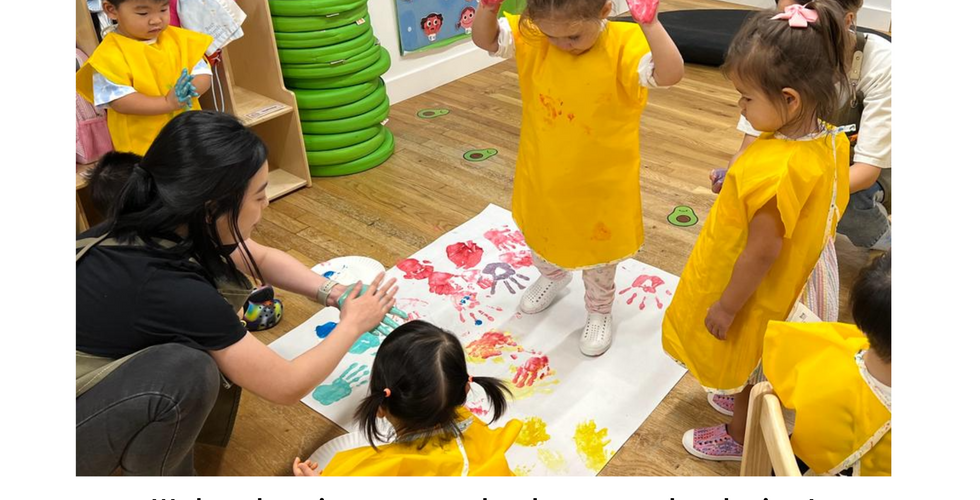







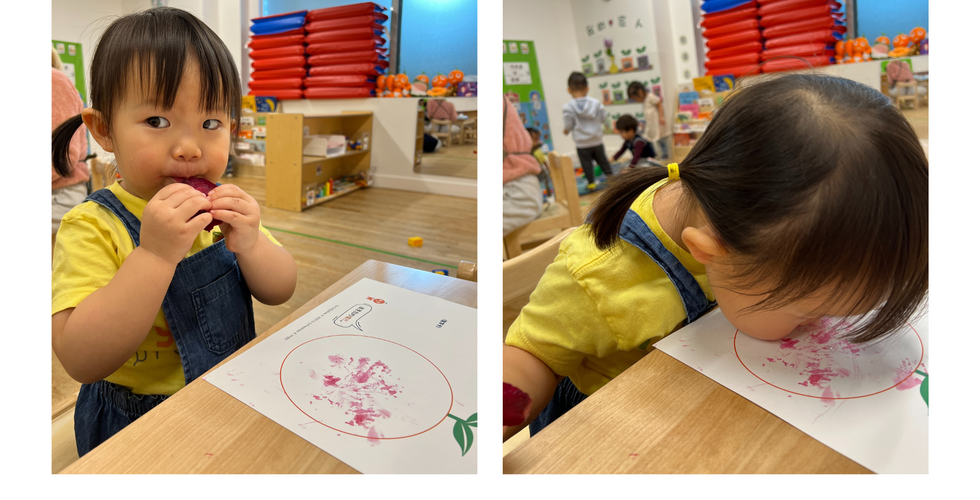





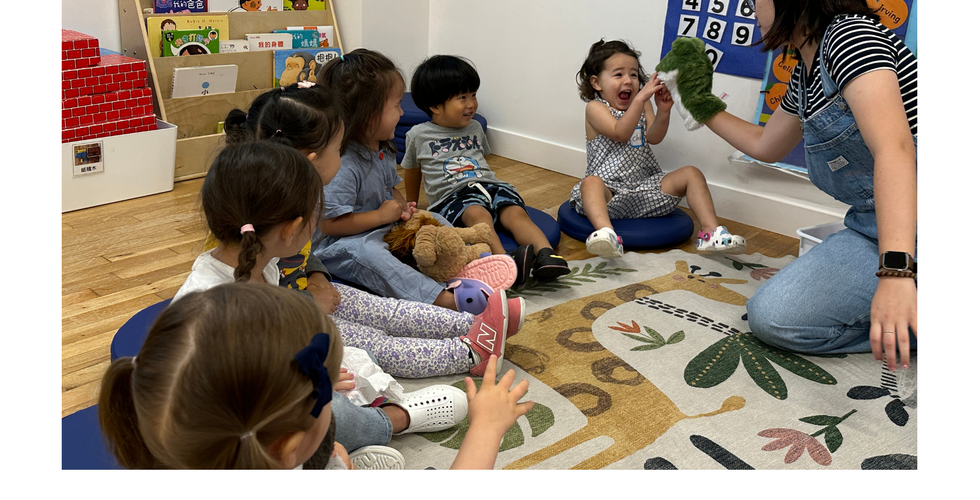







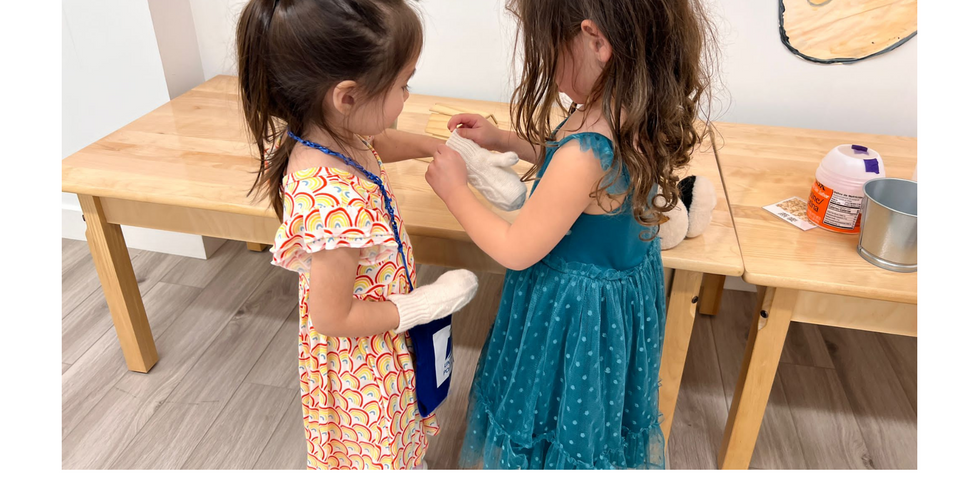











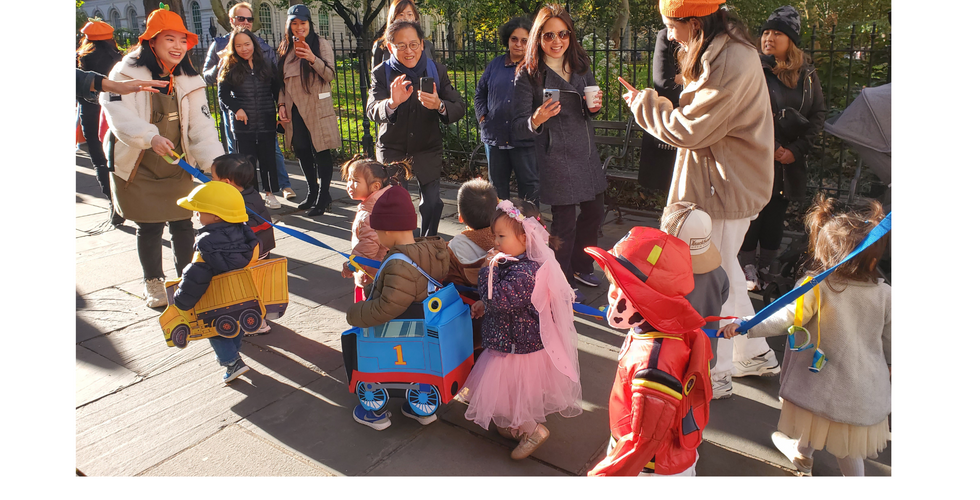





























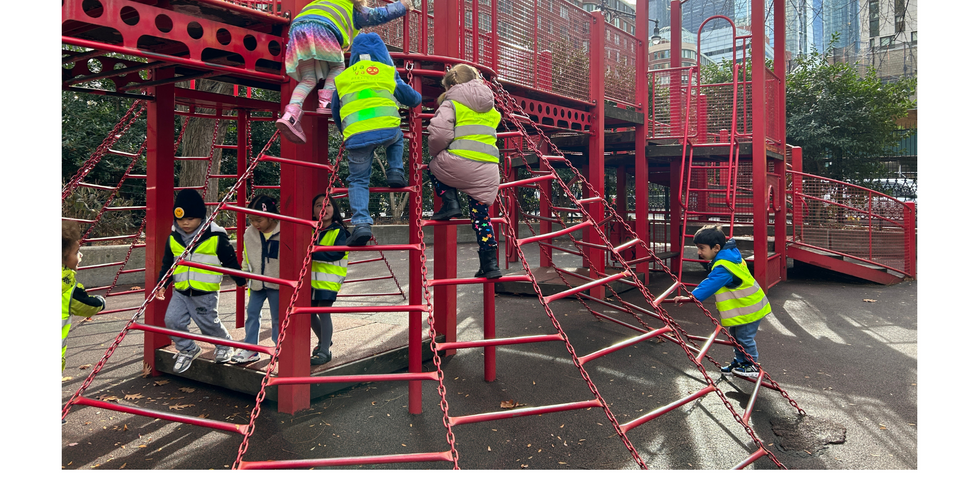

















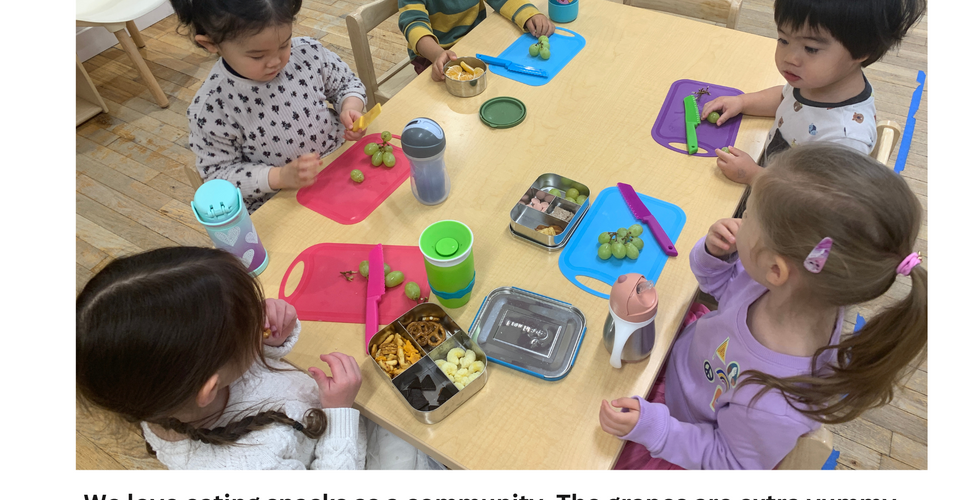


Comments